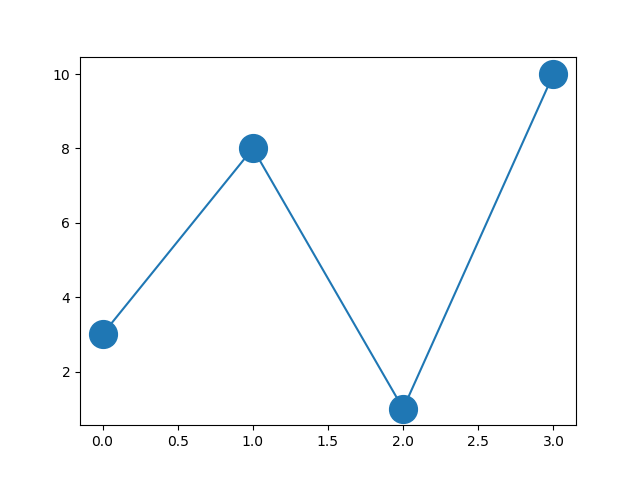

MATPLOTLIB SCATTER POINT SIZE PATCH

Those are not specified or None, the marker color is determinedīy the next color of the Axes' current "shape and fill" colorĬycle. In that case the marker color is determinedīy the value of color, facecolor or facecolors. Matching will have precedence in case of a size matching with xĭefaults to None. If you want to specify the same RGB or RGBA value forĪll points, use a 2-D array with a single row. Note that c should not be a single numeric RGB or RGBA sequenceīecause that is indistinguishable from an array of values to beĬolormapped. A 2-D array in which the rows are RGB or RGBA.

A sequence of n numbers to be mapped to colors using cmap and.A sequence of color specifications of length n.c : color, sequence, or sequence of color, optional s : scalar or array_like, shape (n, ), optionalĭefault is rcParams ** 2. scatter ( x, y, s=None, c=None, marker=None, cmap=None, norm=None, vmin=None, vmax=None, alpha=None, linewidths=None, verts=None, edgecolors=None, *, plotnonfinite=False, data=None, **kwargs ) ¶Ī scatter plot of y vs x with varying marker size and/or color. Plt.scatter(xedges,yedges,c=zedges,alpha=0.7,cmap=cm. ¶ matplotlib.pyplot. import matplotlib.pyplot as plt from numpy import pi n 16 create a n x n square with a marker at each point xdata ydata for x in range(n): for y in range(n): xdata.append(x) ydata.append(y) fig,ax plt.subplots(figsize7,7) important part: calculate the marker size so that the markers touch radius in data coordinates. Hist,edges=np.histogramdd((delta,vf,dS), (xedges,yedges,zedges)) A simple, but approximate solution is to use the location of a point in or on the bin edge itself as a proxy for the points in it: xedges=np.linspace(-10,10,100) Unfortunately, when using np.histogram I don't think there is any easy way to associate bins with individual data points.

Or, if you need to pay more attention to outliers, then perhaps you could bin your data using np.histogram, and then compose a delta_sample which has representatives from each bin. Plt.scatter(delta,vf,c=dS,alpha=0.7,cmap=cm.Paired) So the easiest thing to do would be to take a sample of say, 1000 points, from your data: import randomįor example: import matplotlib.pyplot as plt Unless your graphic is huge, many of those 3 million points are going to overlap.


 0 kommentar(er)
0 kommentar(er)
